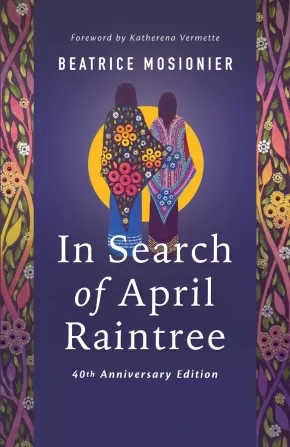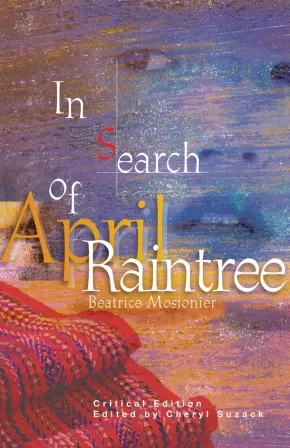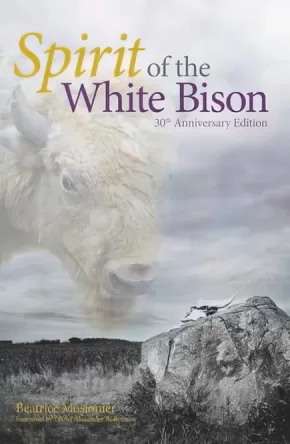Beatrice Culleton Mosioner
Métis fiction writer Beatrice Culleton Mosionier was born in the St. Boniface area of Winnipeg, Manitoba, in 1949 and after some time in Toronto, she has moved back to Winnipeg. Aside from writing, Beatrice worked for a number of years at Pemmican Publications, a Manitoba publishing house. She has written works of fiction aimed at both adults and children.
Books (2)
Synopsis:
Memories. Some memories are elusive, fleeting, like a butterfly that touches down and is free until it is caught. Others are haunting. You'd rather forget them, but they won't be forgotten. And some are always there. No matter where you are, they are there, too.
In this moving story of legacy and reclamation, two young sisters are taken from their home and family. Powerless in a broken system, April and Cheryl are separated and placed in different foster homes. Despite the distance, they remain close, even as their decisions threaten to divide them emotionally, culturally, and geographically. As one sister embraces her Métis identity, the other tries to leave it behind.
Will the sisters’ bond survive as they struggle to make their way in a society that is often indifferent, hostile, and violent?
Beloved for more than 40 years, In Search of April Raintree is a timeless story that lingers long after the final page. This anniversary edition features a foreword by Governor General’s Award–winning author Katherena Vermette, and an afterword by University of Regina professor, Dr. Raven Sinclair (Ôtiskewâpit), an expert on Indigenous child welfare.
Educator Information
This 40th anniversary edition features a foreword by Governor General’s Award–winning author Katherena Vermette, and an afterword by University of Regina professor, Dr. Raven Sinclair (Ôtiskewâpit), an expert on Indigenous child welfare.
A critical edition of this work, which includes ten critical essays accompanying the text, is available here: In Search of April Raintree: Critical Edition
A version written specifically for students in grades 9-12 that does not contain the graphic scene that is contained in this original version is available here: April Raintree
Find a teacher guide for In Search of April Raintree and April Raintree here: Teacher Guide for In Search of April Raintree and April Raintree: A Trauma-Informed Approach to Teaching Stories of Indigenous Survivance, Family Separation, and the Child Welfare System
Additional Information
343 pages | 5.50" x 8.50" | Paperback | Critical Edition
Synopsis:
Memories. Some memories are elusive, fleeting, like a butterfly that touches down and is free until it is caught. Others are haunting. You'd rather forget them, but they won't be forgotten. And some are always there. No matter where you are, they are there, too.
In this moving story of legacy and reclamation, two young sisters are taken from their home and family. Powerless in a broken system, April and Cheryl are separated and placed in different foster homes. Despite the distance, they remain close, even as their decisions threaten to divide them emotionally, culturally, and geographically. As one sister embraces her Métis identity, the other tries to leave it behind.
Will the sisters’ bond survive as they struggle to make their way in a society that is often indifferent, hostile, and violent?
The first edition of In Search of April Raintree, published in 1984, has since touched many generations of readers, becoming a Canadian school classic. In this edition, ten critical essays accompany one of the best-known texts by an Indigenous author in Canada.
Educator Information
In this edition, ten critical essays accompany the text.
A 40th-anniversary edition of In Search of April Raintree is available here: In Search of April Raintree: 40th Anniversary Edition
A version written specifically for students in grades 9-12 that does not contain the graphic scene that is contained in this original version is available here: April Raintree
Additional Information
343 pages | 5.50" x 8.50" | Paperback | Critical Edition
Teen Books (1)
Synopsis:
Memories. Some memories are elusive, fleeting, like a butterfly that touches down and is free until it is caught. Others are haunting. You'd rather forget them, but they won't be forgotten. And some are always there. No matter where you are, they are there, too.
In this moving story of legacy and reclamation, two young sisters are taken from their home and family. Powerless in a broken system, April and Cheryl are separated and placed in different foster homes. Despite the distance, they remain close, even as their decisions threaten to divide them emotionally, culturally, and geographically. As one sister embraces her Métis identity, the other tries to leave it behind.
Will the sisters’ bond survive as they struggle to make their way in a society that is often indifferent, hostile, and violent?
Based on the adult novel In Search of April Raintree, this edition has been revised specifically for students in grades 9 through 12.
Educator Information
Recommended Grades: 9-12. This version of the novel was written specifically for students in grades 9-12 and does not contain the graphic scene that is contained in the original version, In Search of April Raintree.
Grades 10-12 English First Peoples resource.
Find a teacher guide for In Search of April Raintree and April Raintree here: Teacher Guide for In Search of April Raintree and April Raintree: A Trauma-Informed Approach to Teaching Stories of Indigenous Survivance, Family Separation, and the Child Welfare System
Additional Information
256 pages | 5.50" x 8.50" | Paperback
Kids Books (1)
Synopsis:
The Great Plains of North America was once home to great herds of bison. The Aboriginal people who lived there revered them and relied on them for food, clothing, and shelter. Into one of these great herds, Little White Buffalo was born in the 19th century. In this heartfelt story, she retells her life - a life that coincides with the devastation of the bison, destroyed by hunters and the coming of the railway.
Additional Information
|










